Our Denmark road trip had to include its main city. In fact, Copenhagen was our first stop. We spent here two very full days, packed with loads of walking, playground stops, palace gazing. We experienced the moody Copenhagen weather with one hot sunny danish day, followed by a cold rainy one. We loved Copenhagen in all its different guises.
Copenhagen Day 1
Our Copenhagen adventure began with a picnic lunch and some drinks in Ofelia Plads, located near our hotel. Prices are quite steep for drinks, with roughly 15 euros for an Aperol Spritz, but we discovered that these are the normal prices in Copenhagen. There are food trucks in Ofelia Plads and we had a nice picnic with two different pizzas.
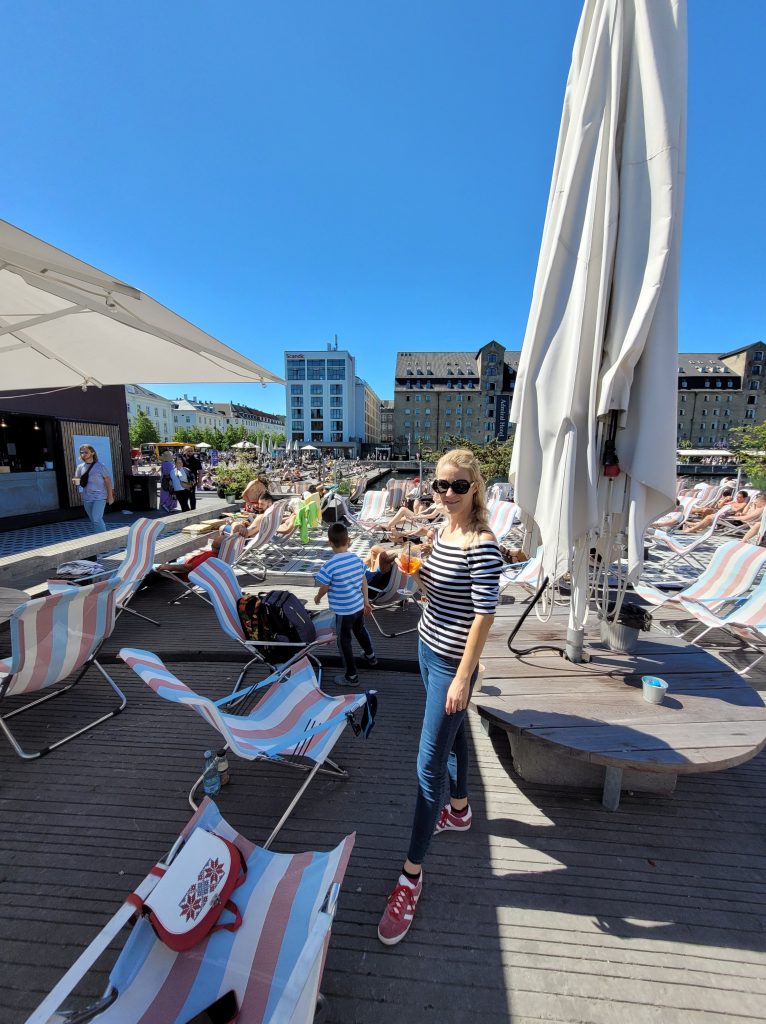
Once we check-in, we started our sightseeing journey. To make things a little bit interesting for Eric, I created a travel itinerary using the google maps app. Our first stop, a 5 minutes walk from the hotel was Frederik’s Church, also called the marble church, which has the largest dome in Scandinavia with a 31m diameter. The church can be visited free of charge. Then, we walked over to Amalienborg, where Eric learnt about monarchies and kingdoms. The statue of Frederick V was a good opportunity to remind him about dynasties and how the ruling of Denmark was passed over from father to son over generations. He immediately linked this to the Joseon dynasty in South Korea (so worldschooling works, hehe). We also pointed out that Amalienborg is very symmetrical, with an octagonal square and four buildings with identical facades. We then told him the story of how Amalienborg became the queen’s residence after their initial residence burnt down. He likes a good story, especially if it is about some dramatic events. The changing of the Royal Life Guards was also a nice treat for the eye, as Eric just followed them around the square.
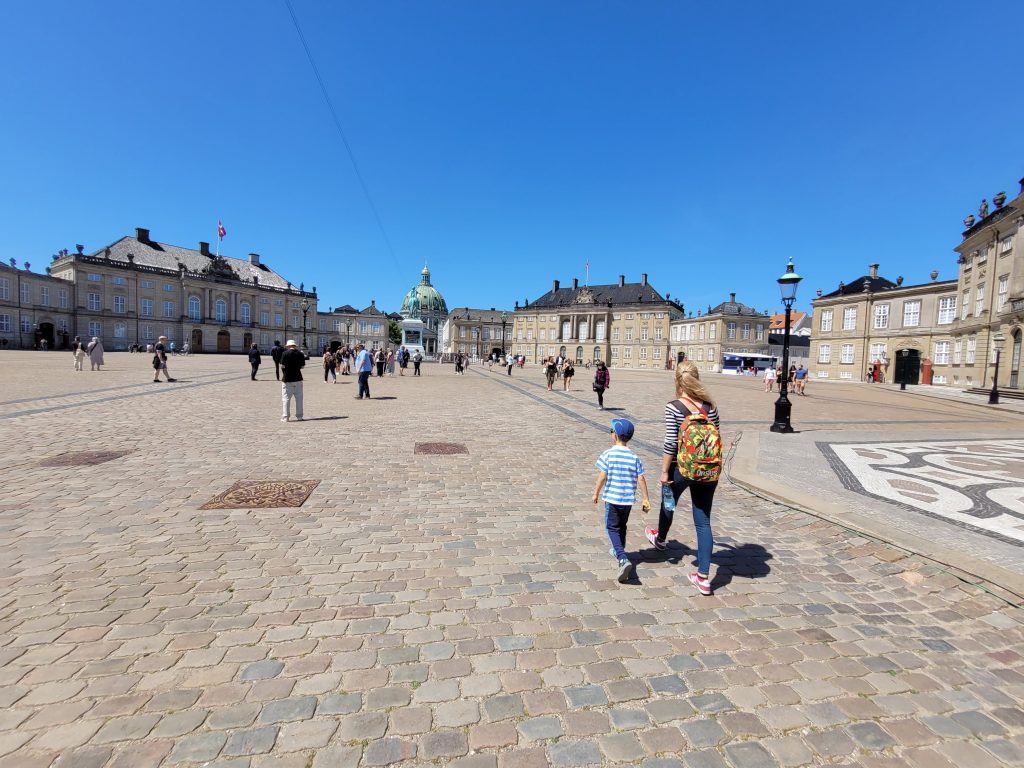
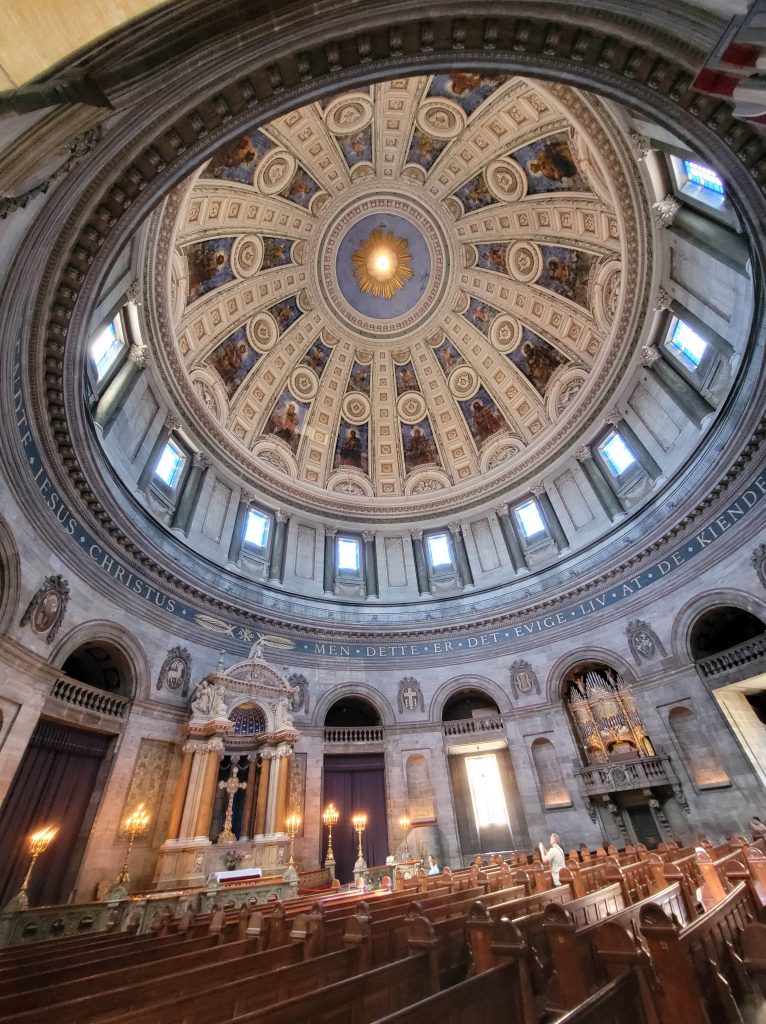
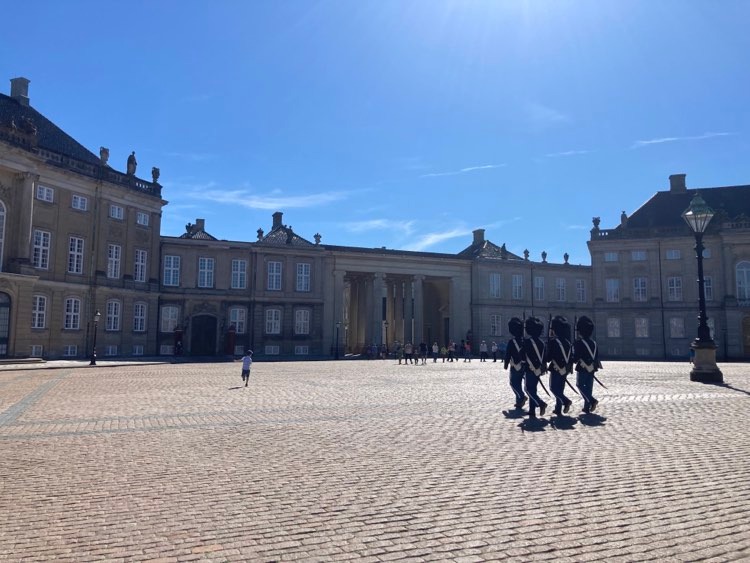
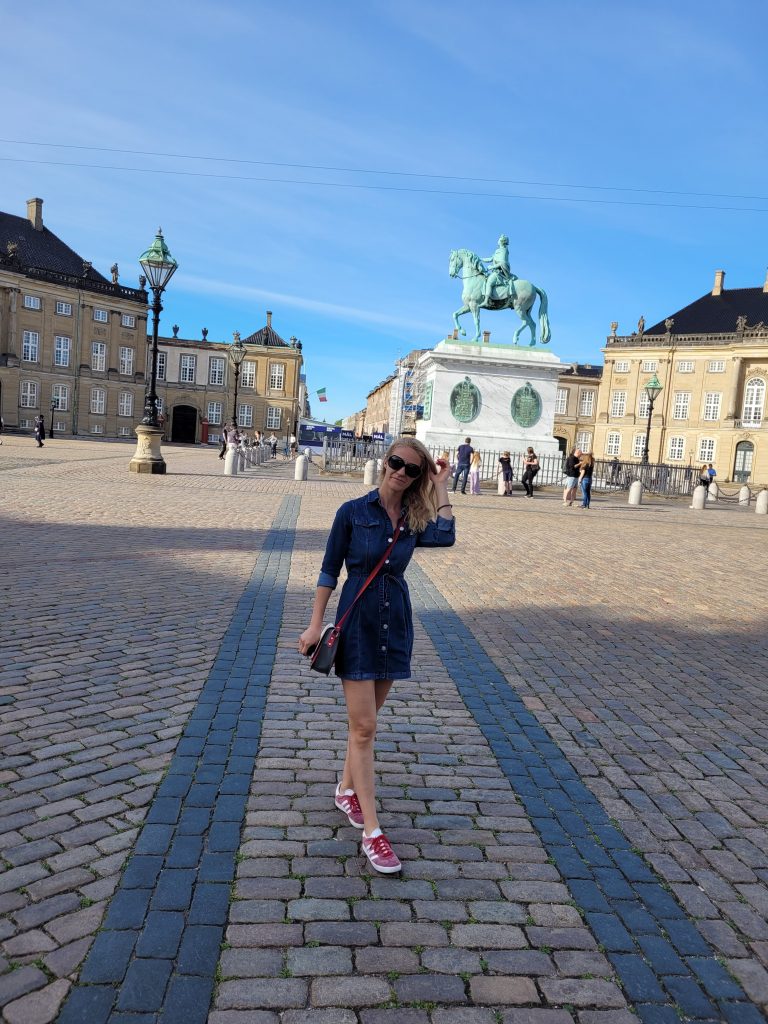
If you continue further towards the waterfront, Amaliehaven rewards you with a nice spraying fountain and a tree-lined park along the waterfront. Just across the water, you can see the oldest floating cold war museum in Denmark located on Holmen. We just glanced at the warships, including the frigate Peder Skram, the torpedo boat Seehested, and the Sælen submarine. If you are interested, you can find more information regarding prices, opening hours and how to get there on the museum website. We only had two days for Copenhagen which is why we continued North, along the waterfront until we reached the Copenhagen citadel, known as Kastellet. On the left, there’s Saint Alban’s Church and the beautiful bronze fountain of a Norse goddess, named Gefion. Eric had to simply walk around the entire fountain and only afterwards we continued along our way towards the Little Mermaid. You can’t miss it, as there are always tens of tourists lined up to glimpse a photo. The waterfront here is rocky and steep, not to mention slippery. We had quite the experience here as Eric fell twice, once taking a dip in the sea with his feet (and shoes, obviously) and then falling on his back. So keep an eye on your kids, if you want to avoid that… It was story time here as well, as we quickly remembered the tale of the little mermaid and its creator, Hans Christian Andersen. We later got to see the houses he lived in, while staying in Nyhaven in Copenhagen.

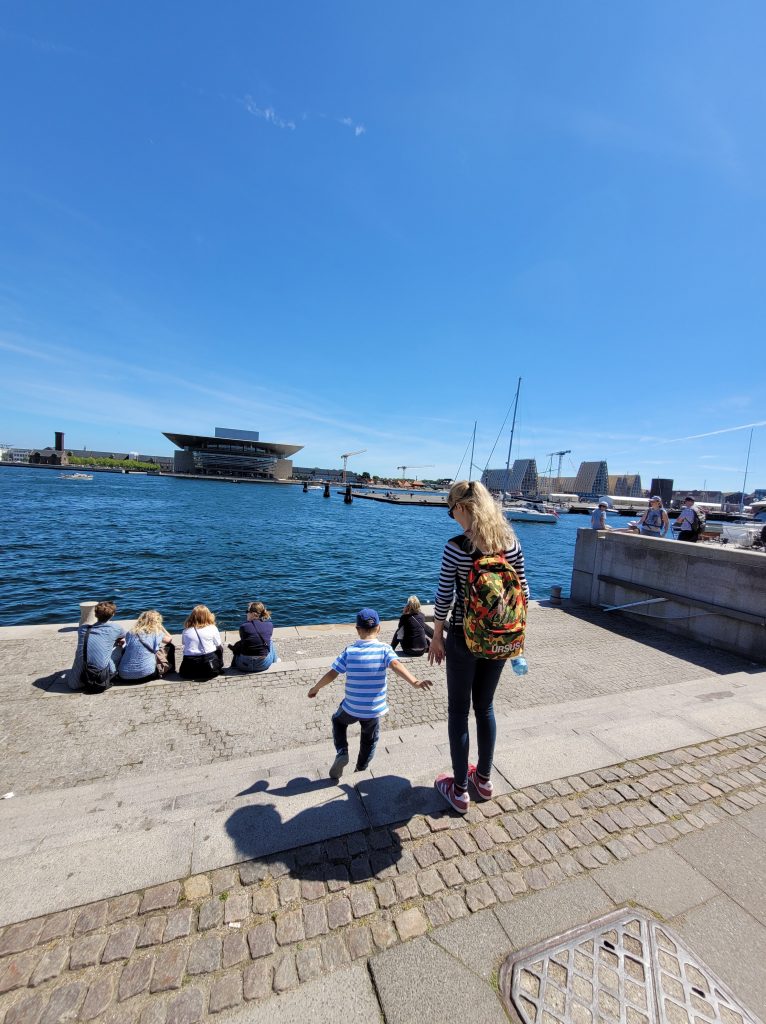
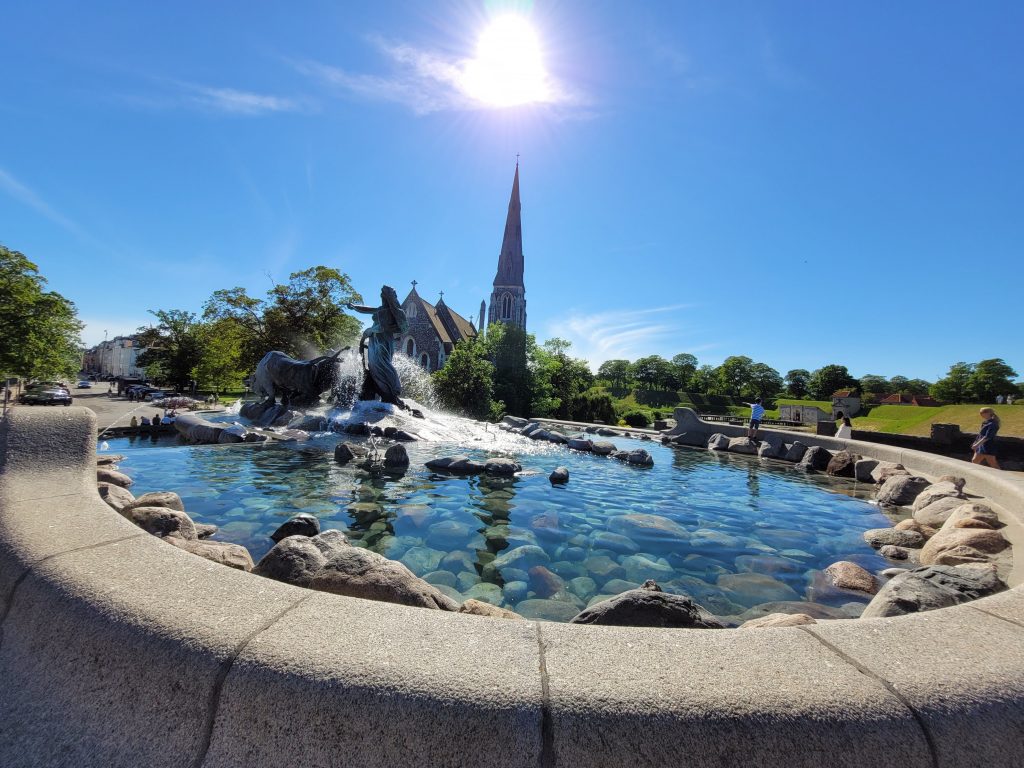
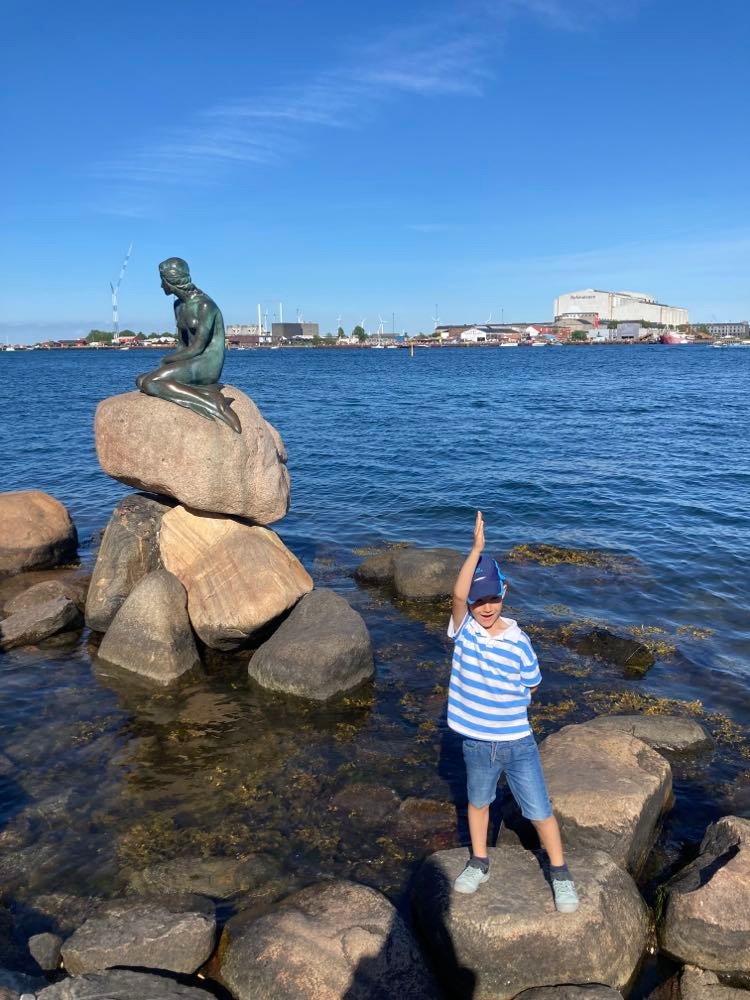
We continued further from here towards the entrance gate to Kastellet, one of the best preserved fortresses in Northern Europe. Kastellet is built as a pentagon with corner bastions. An outside ring of ramparts and bastions lined Copenhagen and was linked to Kastellet. Only the ramparts and bastions in Christanshaven are visible today. The Kasetllet was built in order to be self sufficient, with a small church and a total of 16 windmills. We wandered around the main street in Kastellet and climbed up on one of the ramparts, which are now transformed into beautiful pebbled alleys. In fact, apart from some military activities, Kastellet is nowadays used as a public park.
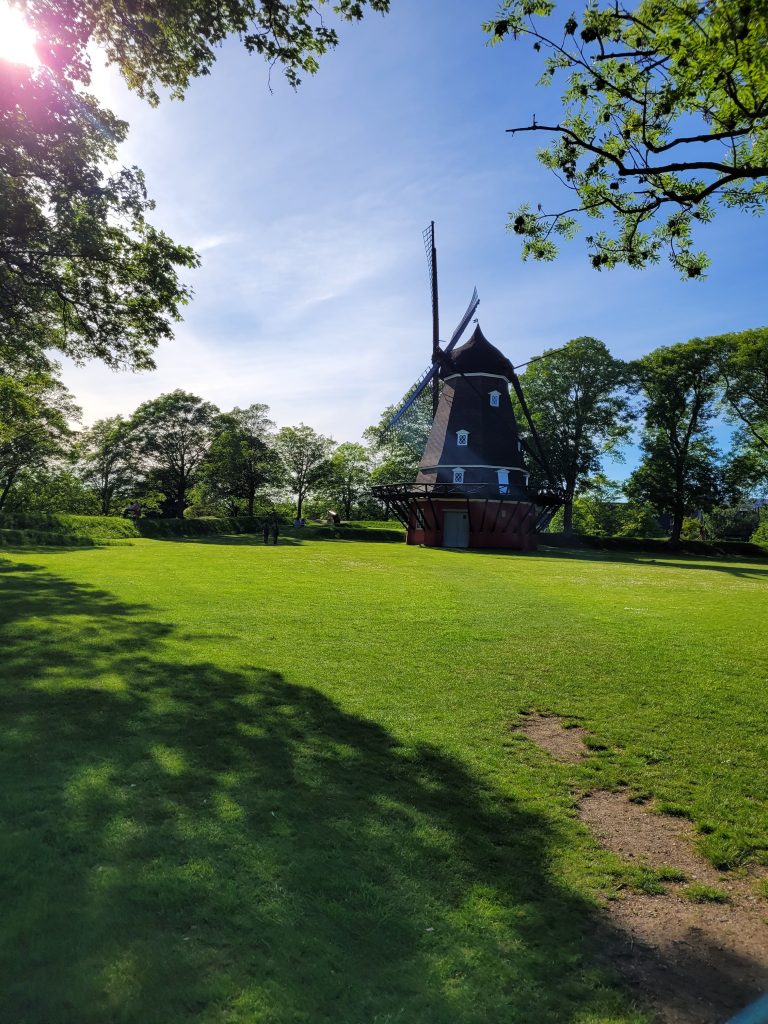
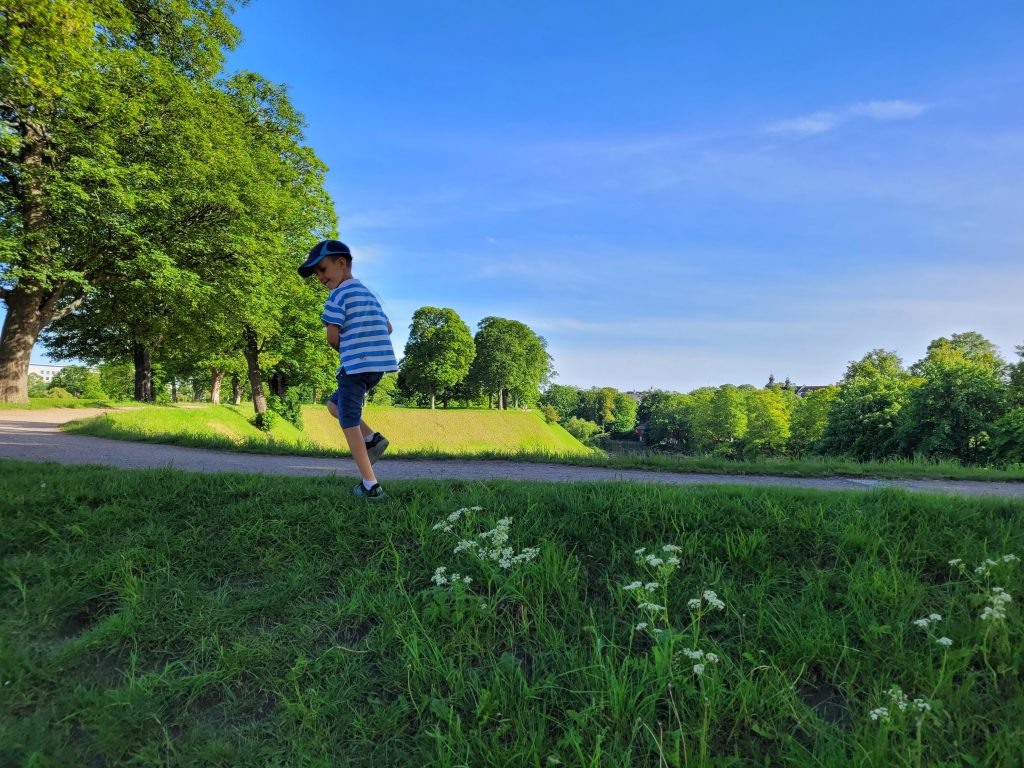
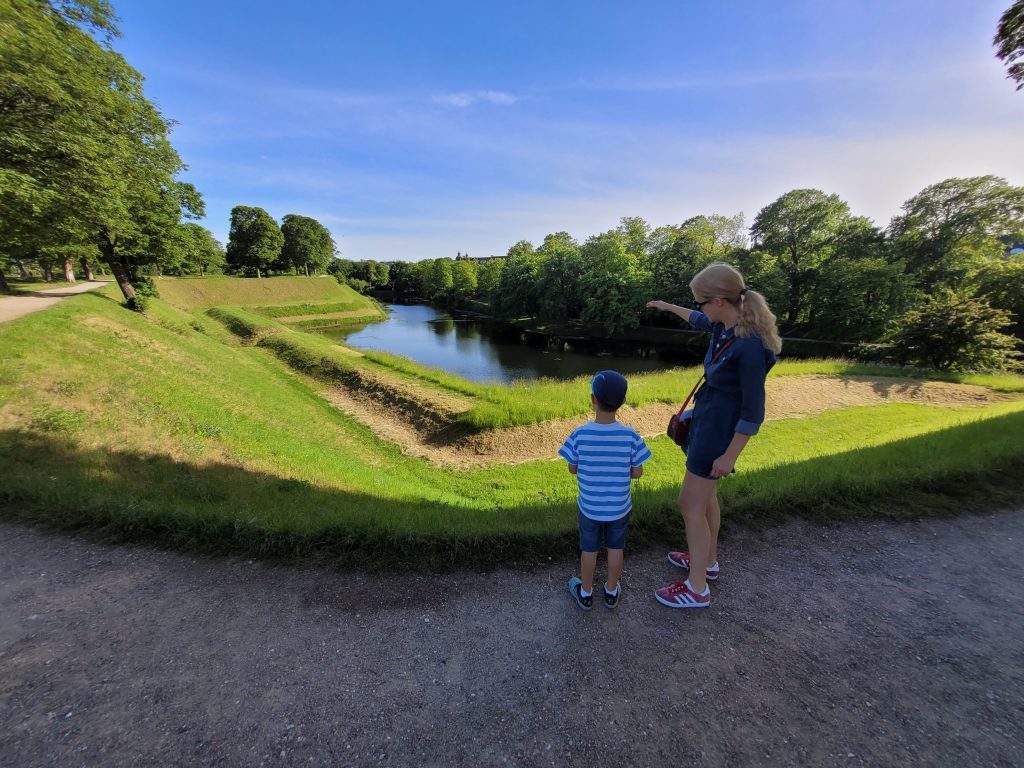
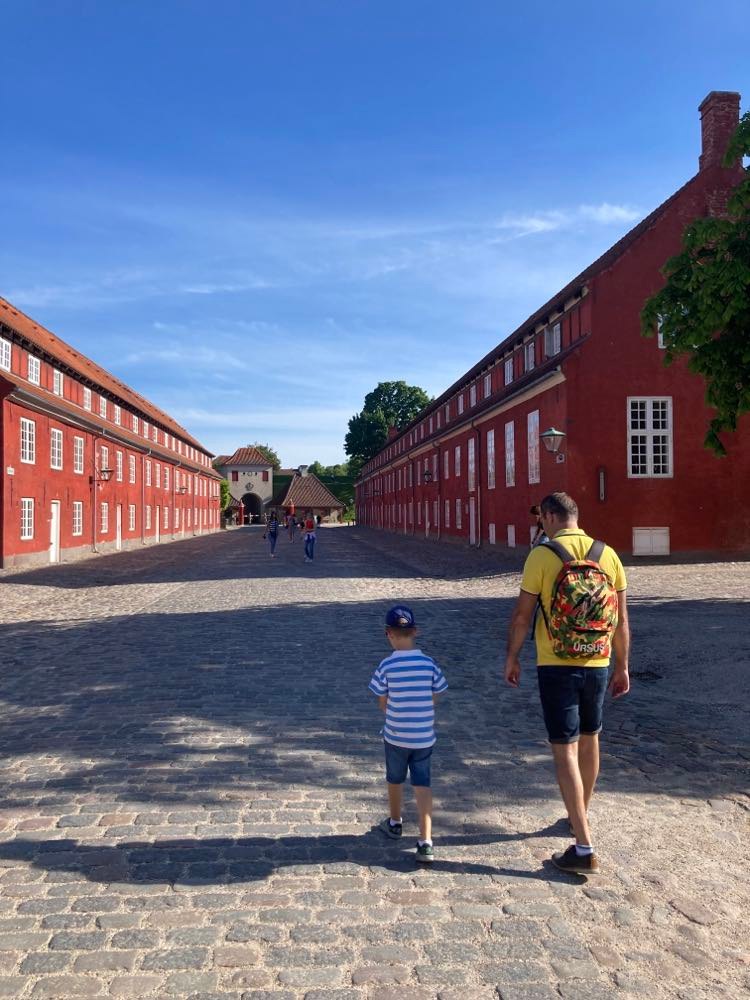
Exit Kastellet and head over to Nyboder, where streets are lined with 16-17th century yellow houses, which were once used as accommodation by people of the fleet and their families. They had their own church, hospital, school, legislation and police. A great deal of Nyboder area is under renovation, but it still offers a nice stroll for us parents and a decent running track for the kids. We considered that the best views were along the smaller streets starting on the Kronprinsessegade street.
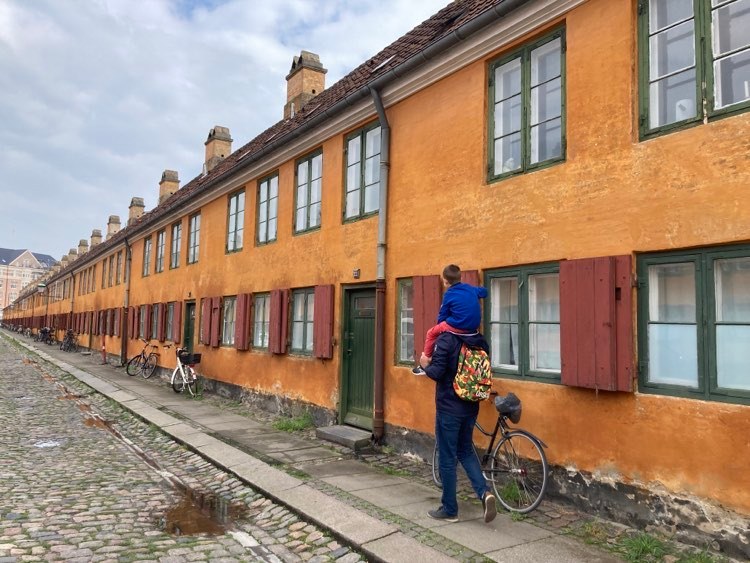
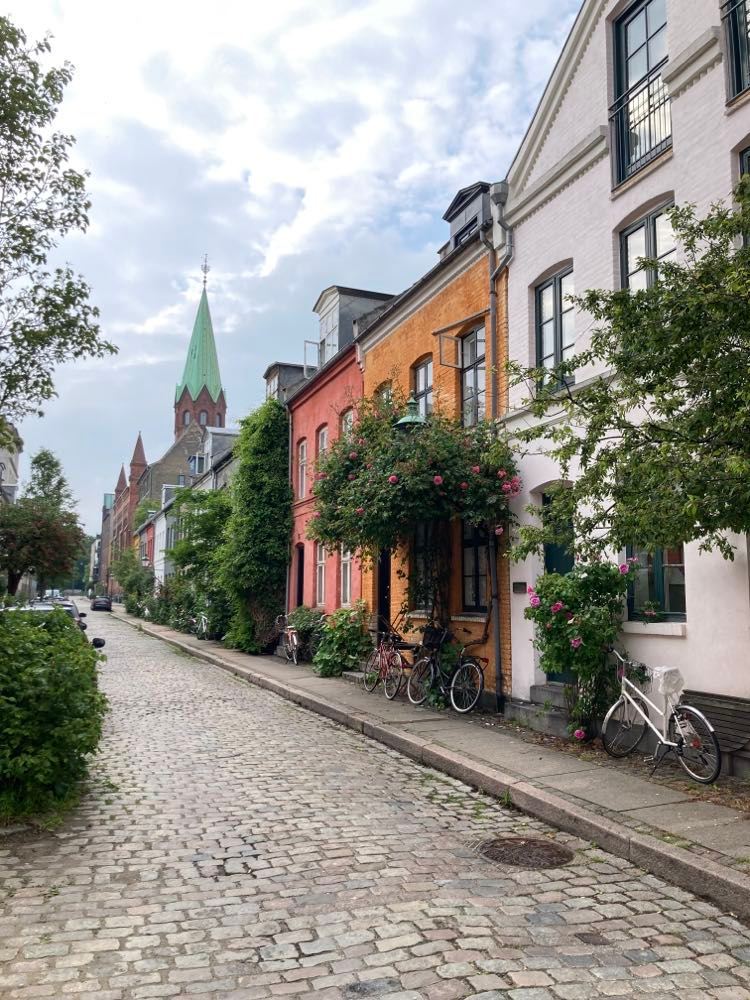
Our next stop was Rosenborg castle, located in the middle of Copenhagen. This is where the crown jewels are kept and the Royal Life Guard is in charge of protecting them. The castle is stunning, surrounded by water and a beautiful park. Unfortunately, we arrived at the castle a little bit too late as they only sell a limited number of tickets. Our visit included a nice stroll around the castle, although Eric was disappointed that he was not able to enter. The park surrounding the castle offers some excellent views, there are cafes close to the castle selling snacks and drinks. We spent about an hour in the simple, yet original playground. I love this sort of playgrounds that trigger the imagination. And kids are pretty resourceful when it comes to inventing new ways of playing.
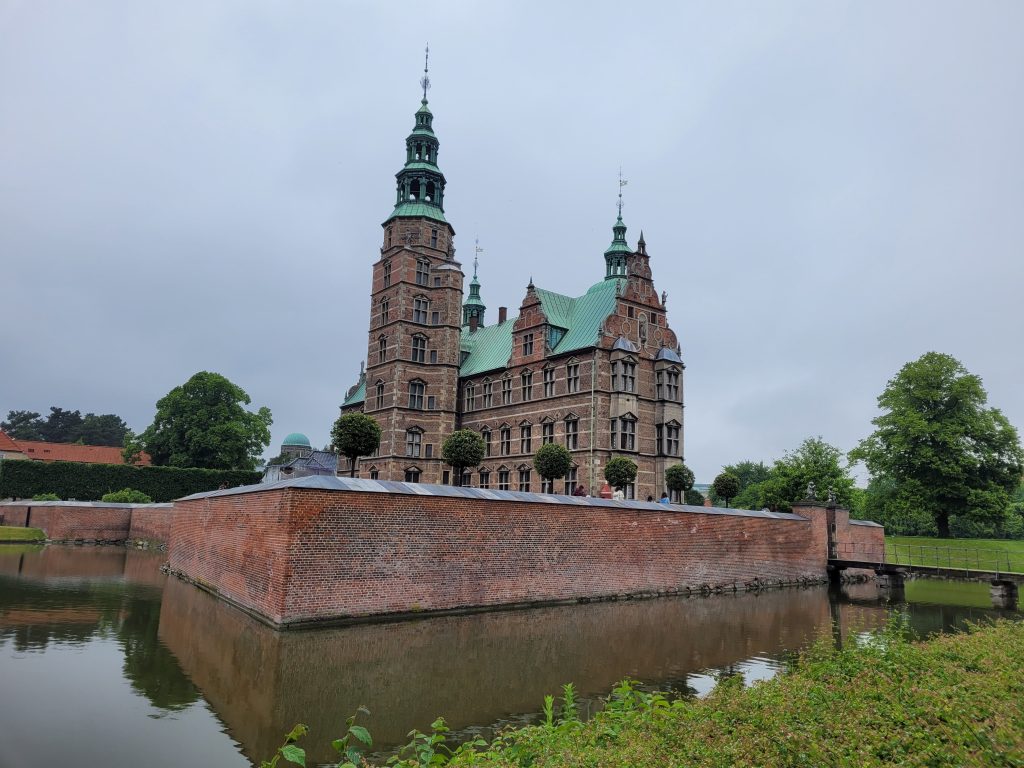
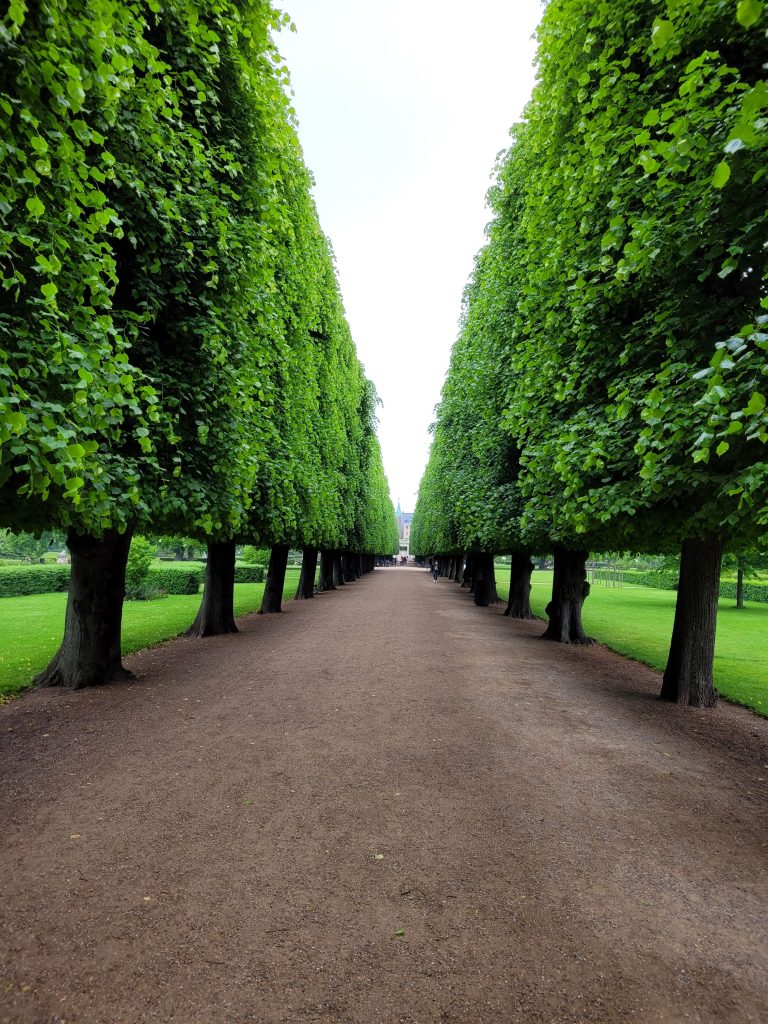
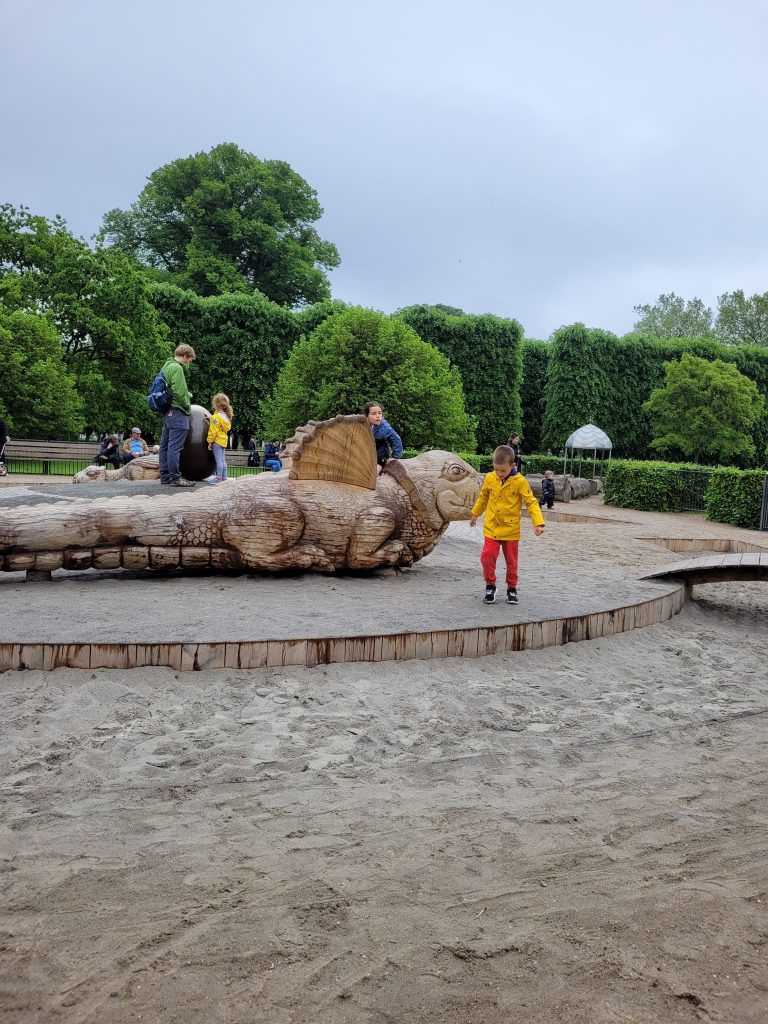
As it was getting late, we returned to Nyhaven for dinner, and walked past the King’s New Square. Nyhaven is probably the most photographed area in Copenhagen. Lined with colourful buildings, Nyhaven has not changed too much since its early years. Years ago, Nyhaven was a place where ships would dock. The cobbled streets were busy with sailors in search for pubs and bars. Today, Nyhaven houses fine boutique hotels, restaurants with sunny terraces and crowds of tourists. Nyhaven for me resembled a lot with the water canal and the historical buildings on Korenlei and Graslei in Gent, Belgium. In fact, we felt Denmark’s vibe to be insync with Belgium and the Netherlands. And it was not just Nyhaven, but also the countryside houses and their surrounding gardens that gave us the same feeling we had while living in Belgium. We ate at one of the terraces in Nyhaven. I am sure the meals and drinks are overpriced and it is indeed crowded, with hordes of tourists passing by. But honestly, for us it was a cozy atmosphere or should I rather say hygge? We ate at Ved Kaejen, 2 dishes of fish fillet with potatoes and salad, which were delicious, although I am not a fan of frying. But I soon came to realise that fish fillet in Denmark is in fact a breaded fish fillet, which is quite frequently and traditionally made of plaice. Expect to pay around 80-100 euros for dinner for 3 persons, including drinks (1 mojito, 2 beers, 1 bottle of water). While waiting for our meal, I reminded Eric about the little mermaid statue that we saw earlier that day and about H.C. Andersen. Then, I pointed out that it was on this street where Andersen lived and wrote part of his stories. We then searched for house numbers 20, 67 and 18, which offered us a good opportunity to discuss house numbering on streets, as well as odd and even numbers. A little bit of math in Copenhagen :). This ended our first day in Copenhagen.
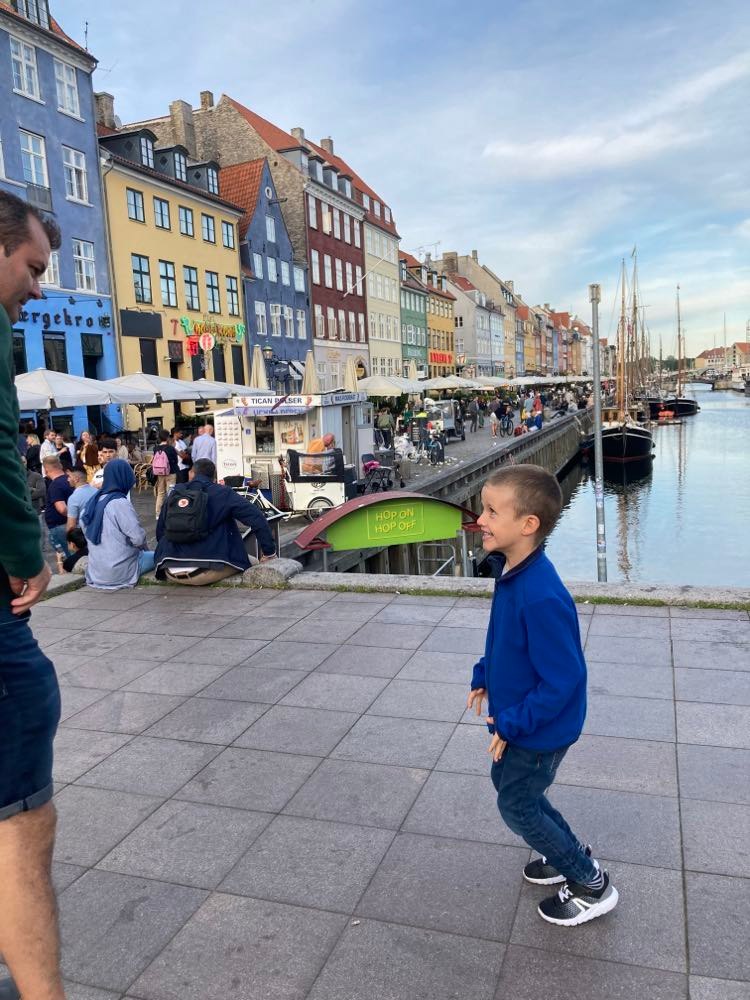
Copenhagen Day 2
Day 2 in Copenhagen was supposed to be a more relaxed day, with fewer sights to see. You can see our itinerary here. Unfortunately, the day started with a cold rain. We decided to make the most of it. Don’t forget your umbrellas or rain coats (they come in handy).
Since the previous day, we just quickly passed through the King’s New Square, we decided to allow a couple of minutes for strolling around the square today as well. Luckily, there was a mini concert held in the square and we enjoyed some orchestral music while glancing at the statue of Christian V, who is responsible for landscaping the square more than 300 years ago. Initially, the entire square was used as storage space for the goods delivered by the boats that docked in the nearby Nyhaven. The statue, similar to the one in Amalienborg, is picturing the king of Denmark and Norway on his horse surrounded by four statues in each corner: queen Artemisia, Alexander the Great, Pallas Athena and Hercules.
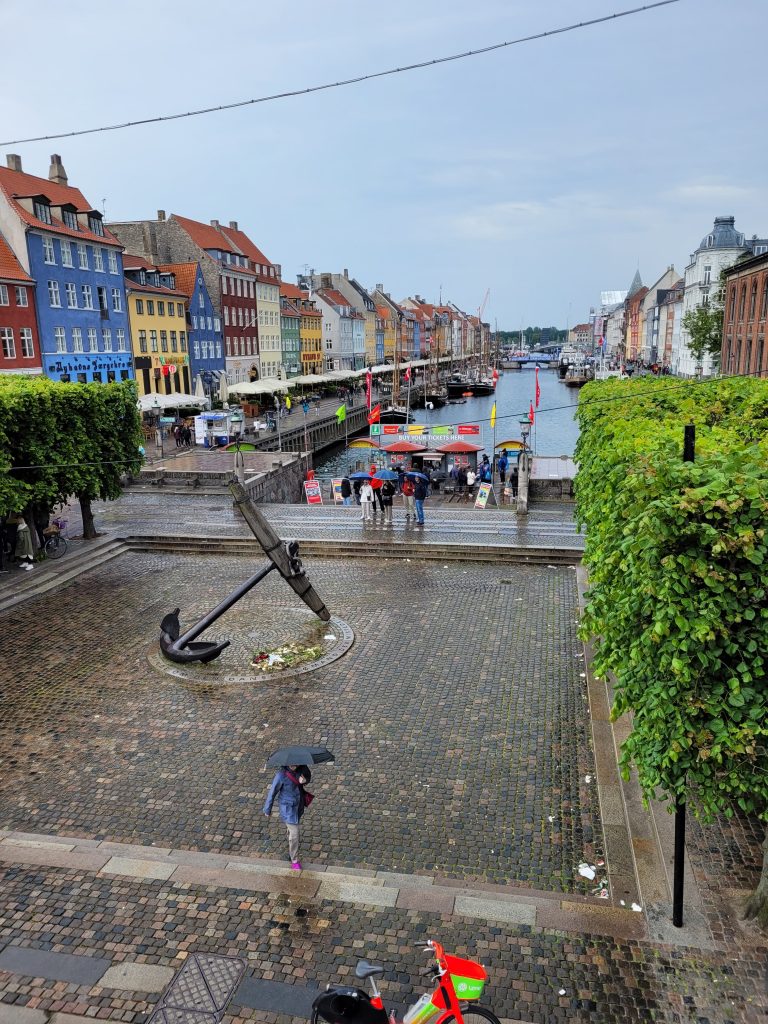
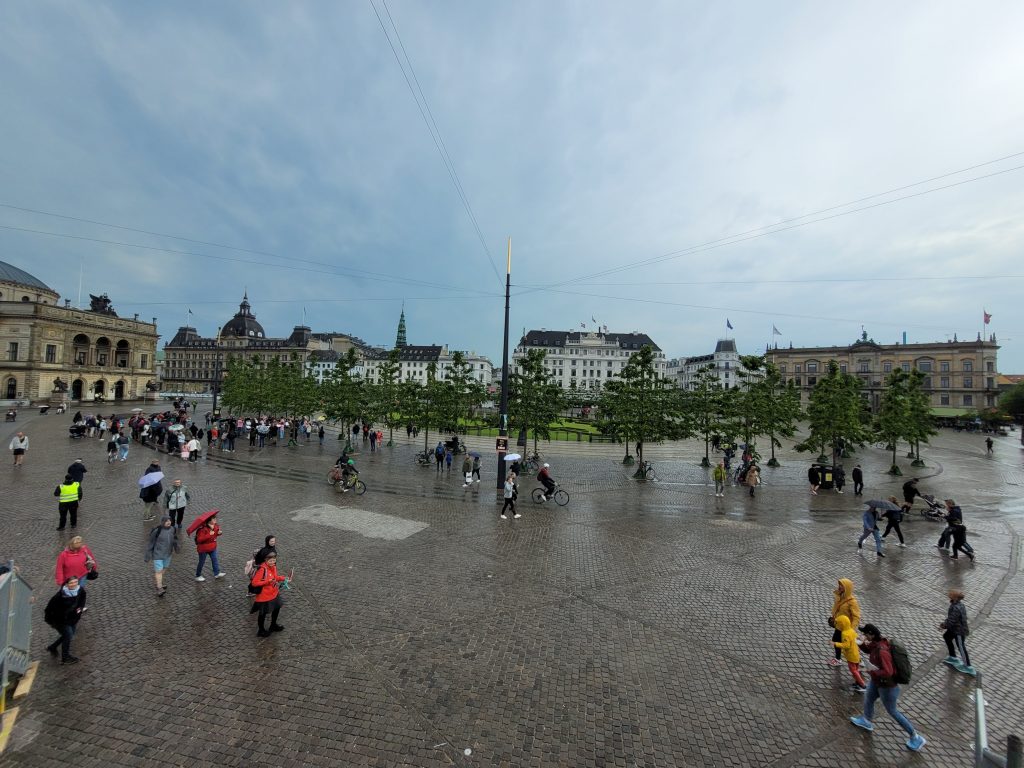
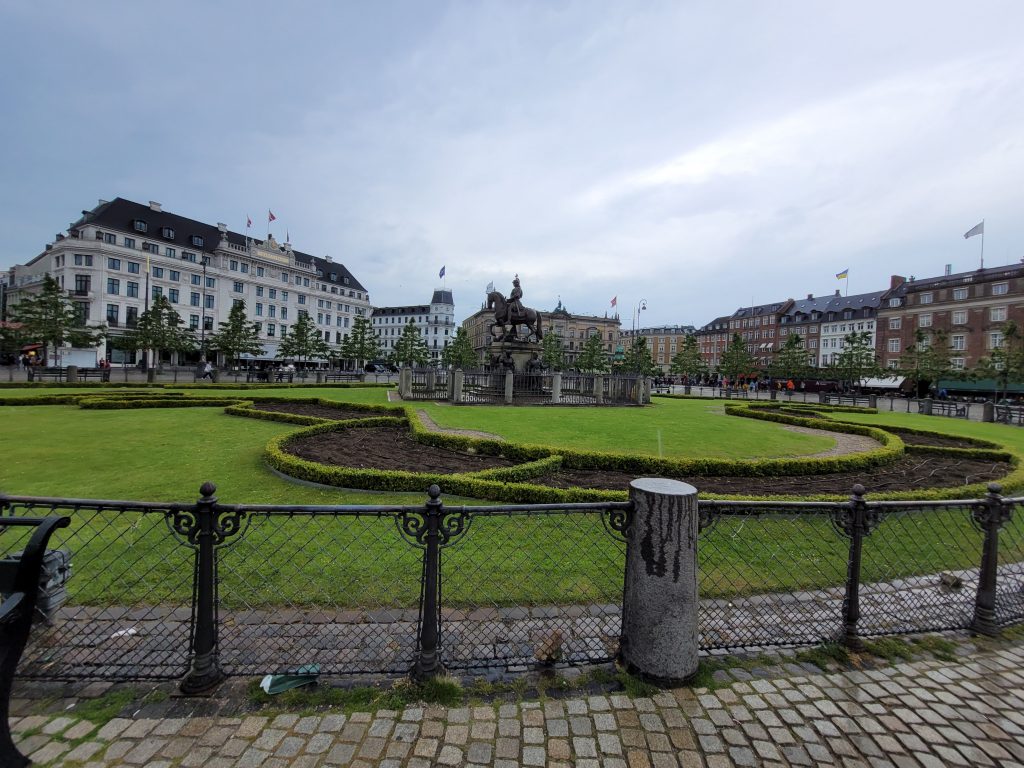
We then headed towards Christiansborg, the seat of the kings of Denmark for more than 800 years. To the left of the palace, you can see the old building that is now home of the Danish stock. The palace burnt down at the end of 1800 and the royal family moved in Amalienborg and never returned. The palace is nowadays used by HM the Queen for formal events. The tower is the tallest building in Copenhagen and visiting is possible and free of charge. There is also a restaurant on top. At the back of the castle, visitors can see the royal stables, as well as a horse paddock.
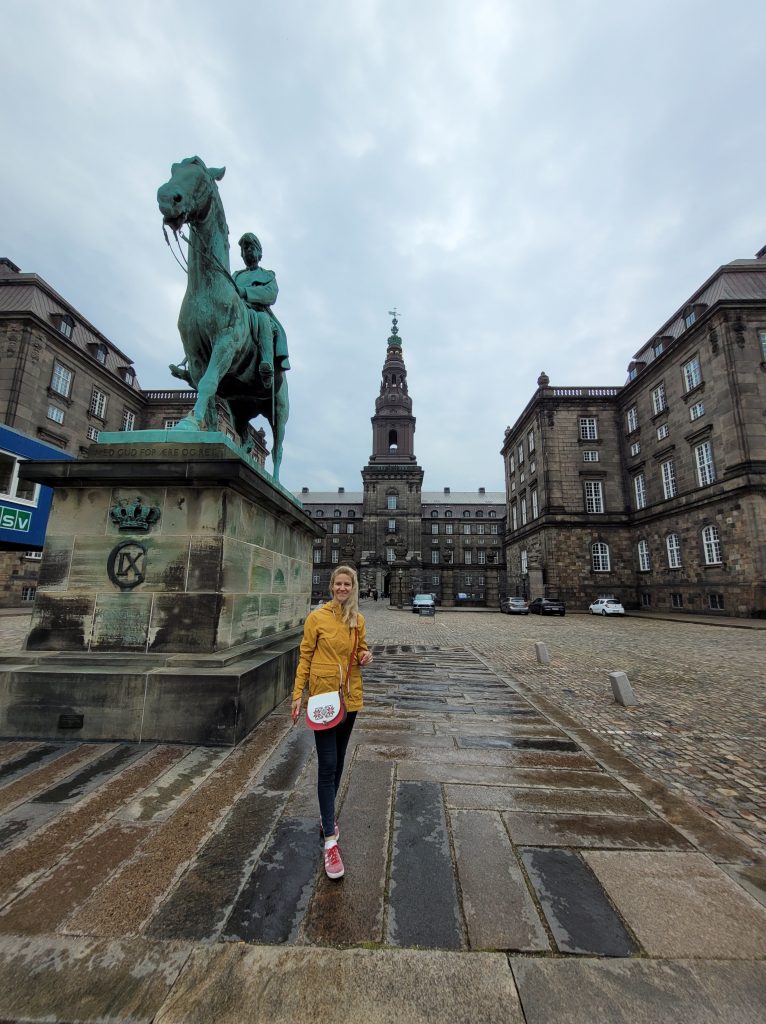
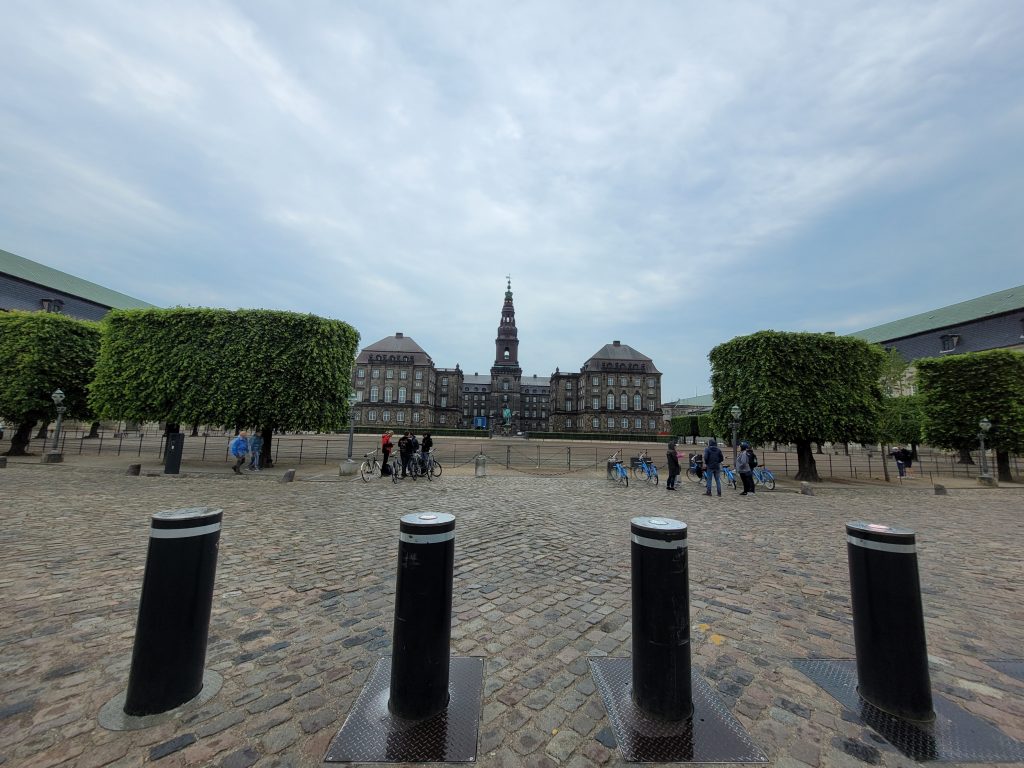
We continued further, pass the Marble Bridge and continued onward to see the famous amusement park, Tivoli Gardens. We just went pass it, since it was not our option to enter the park, especially on a rainy day. Our main target was to see the City Hall and the square. If you walk along the city hall on the H.C. Andersens boulevard, you can enter the interior garden of the city hall. The gate is located here. The garden is small, but it is so representative for Denmark with manicured trees and fountains enclosed by the red brick walls.
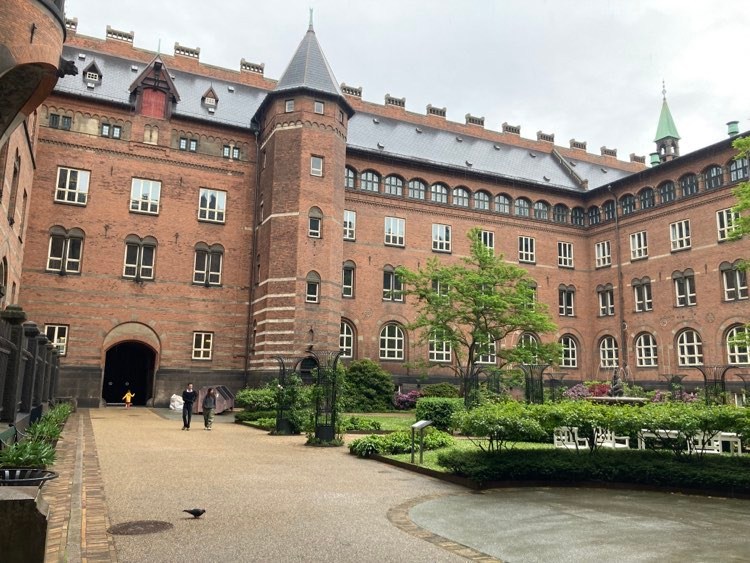
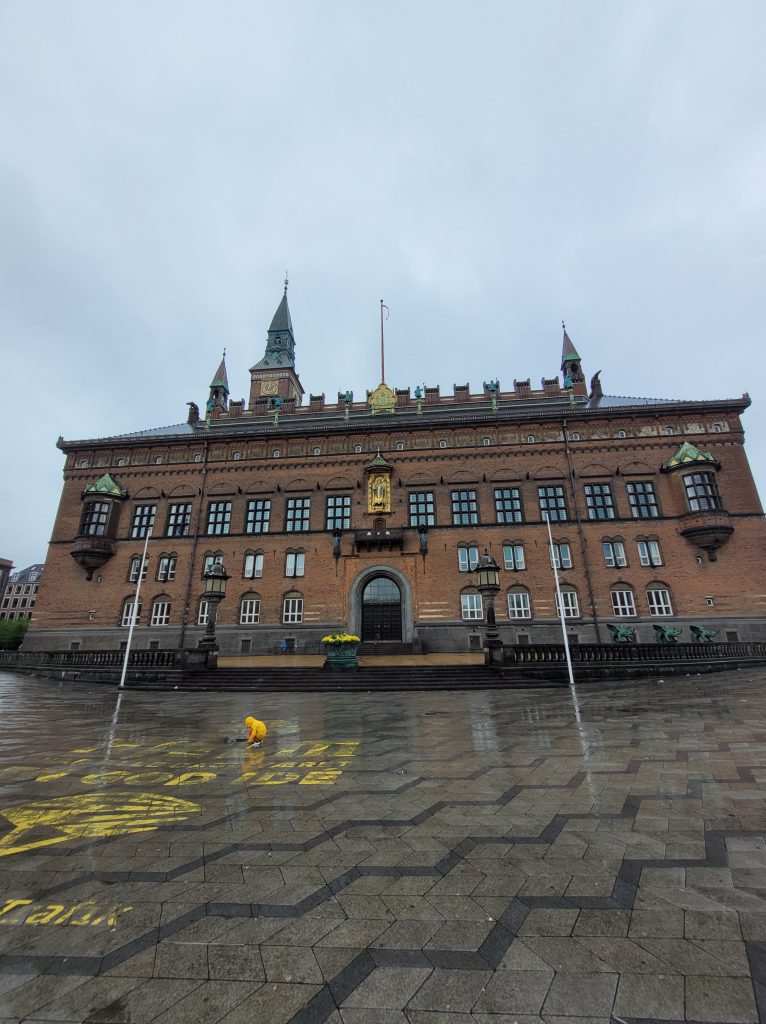
The city hall square is a huge open space area, home to the dragon fountain where kids can have a little break during summer sightseeing tours. Eric was getting a little bit bored, especially since the rain delayed us for nearly half an hour, which we spent under the gate that led to the interior garden of the city hall. To make things a little bit interesting again, we did a little treasure hunt in the square in search for the small dragons located near the facade of the city hall building.
We then charged our batteries and warmed up with hot chocolate and coffee from the nearby 7-eleven store. It is located just on the corner of the pedestrian street, Frederiskberggade. Pedestrian streets are my favourite streets. I love them because of the Christmassy atmosphere with all those shops and cafes, not to mention that Eric can run as much as he wants to without any cars (for me) to worry about.
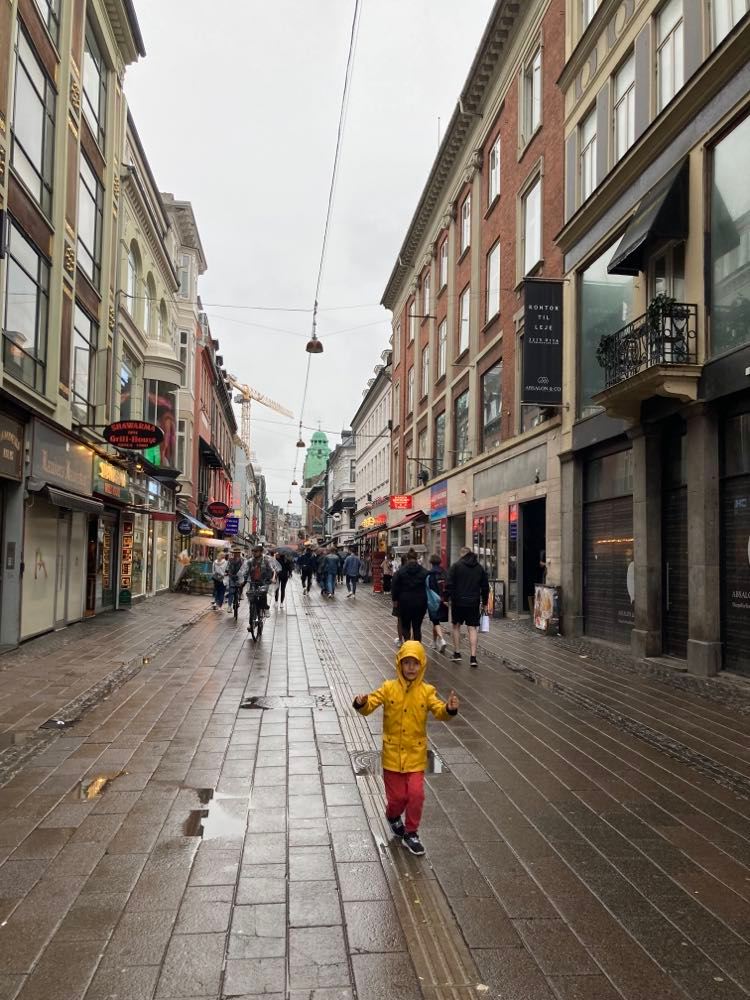
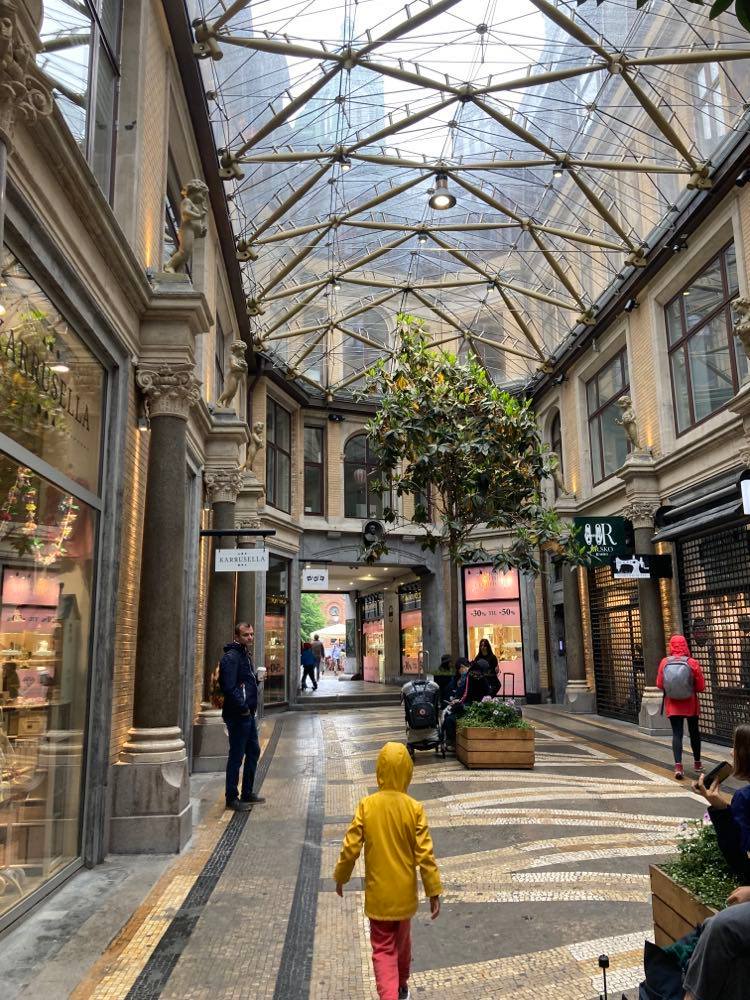
We continued further towards Gammeltorv and Nytorv, where the Copenhagen Christmass market is traditionally held. The square is large and provided us with a good laugh…see below :).
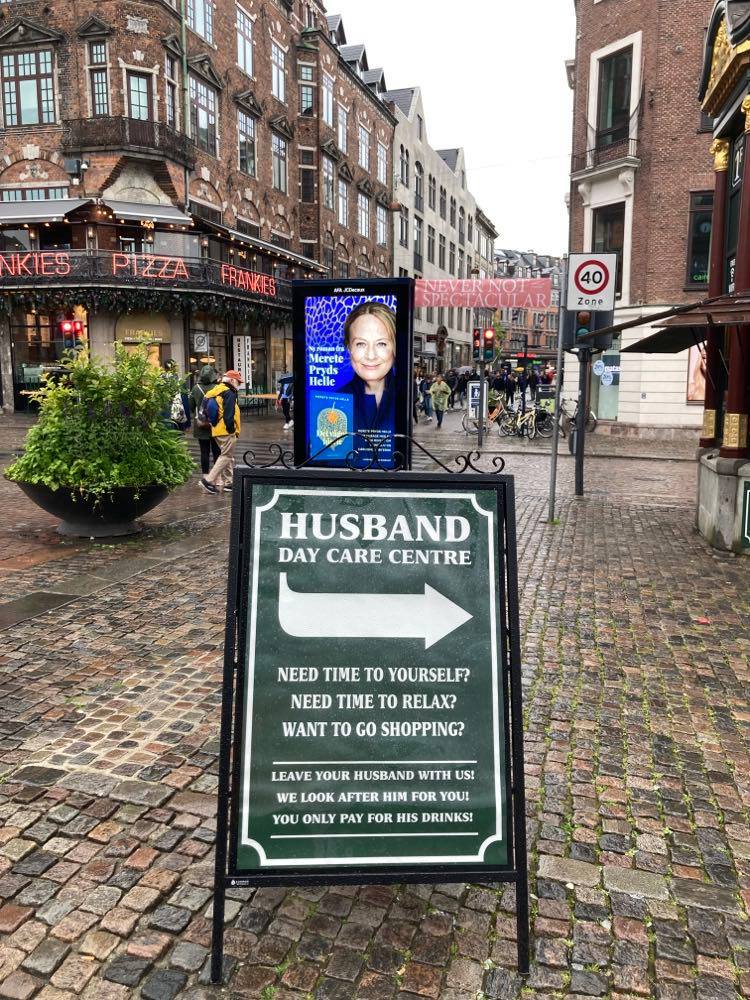
On the way to the Round Tower, we passed near the Copenhagen Cathedral and Copenhagen University. But our main highlight for the second day was in fact the Round Tower, built by Christian IV as an observatory. The helical corridor that twists 7 and a half times was a thrilling experience for Eric and leads to the top platform that offers stunning views over Copenhagen. The tower is part of the Trinitas building complex, which houses the Trinitas church and a library. As we went up on the helical ramp, there was a glass door overlooking the church. The library hall is located above the church and entrance is possible via the tower ramp. There was an art exhibition taking place, but concerts are also held here. We were also able to see the church’s bell loft with an impressive timber roof. Only a small part of the bell loft is available to the public, but glass windows allowed us to catch a glimpse over the entire space. As we climbed up, we got to see a first attempt towards a toilet and a sewage system, which was considered to be innovative at the time. Move closer to the centre of the tower and you can see the hollow core while standing on a glass floor. The top of the tower is home to the planetarium and the observatory (which was closed to the public on our visit). The observatory and its telescope is still used during the winter months, which makes it the oldest operating observatory in Europe.
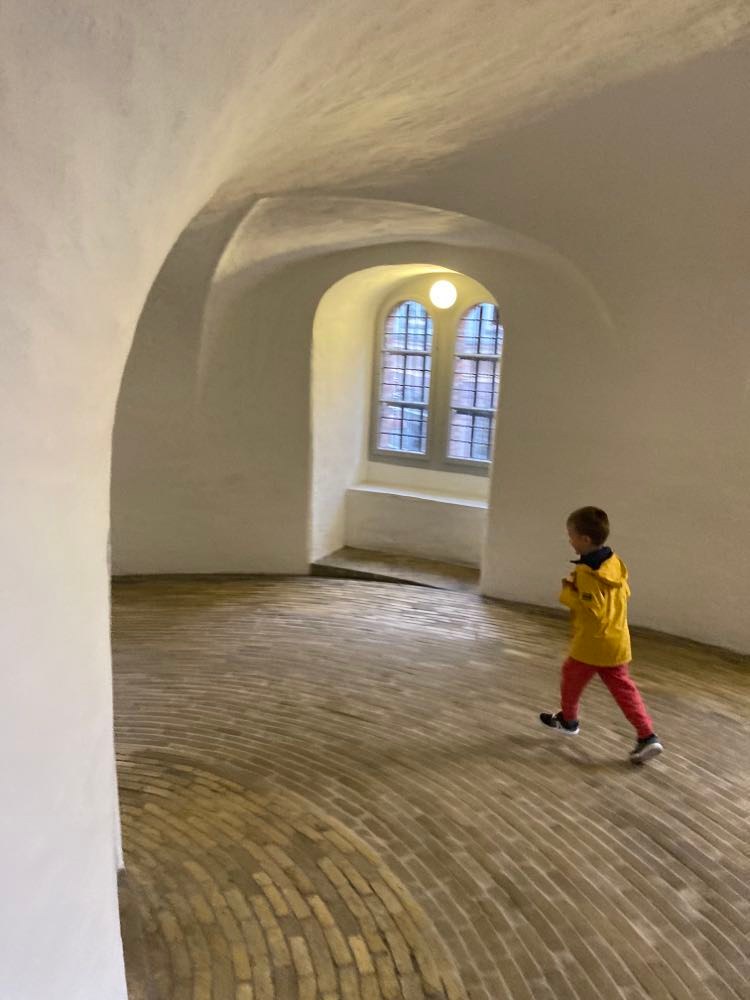
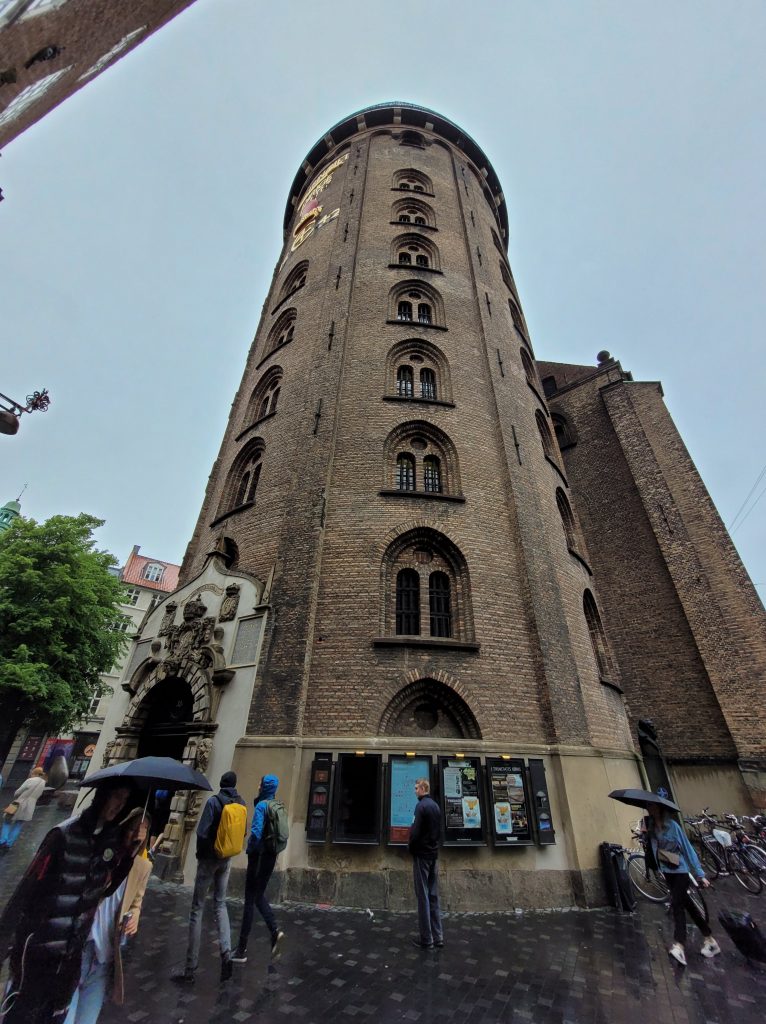
What to eat: smorrebrod or traditional open sandwiches (in all sorts of combinations, they are ah-mazing!), the best icecream , waffle, etc. shop (Vaffelbageren Nyhavn, where you can enjoy your ice cream or waffle while overlooking the fabulous Nyhaven area), all sorts of fish (plaice, salmon, cod).
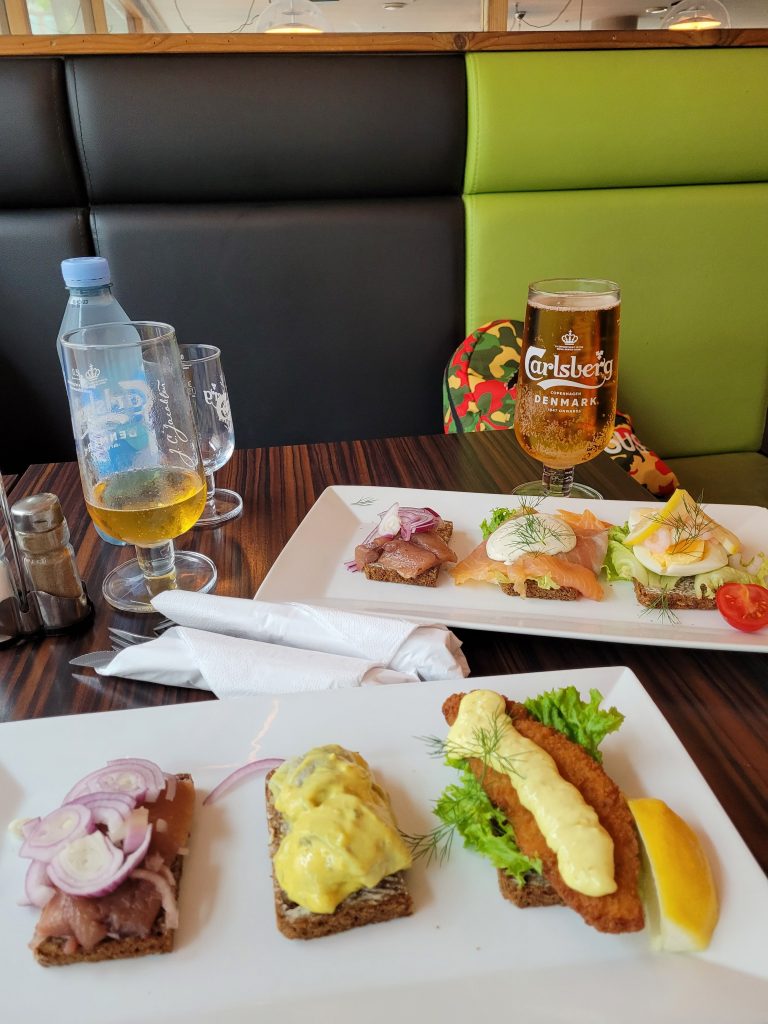
What we did not get to see, but it was on our list: the Experimentarium, which I am sure is a brilliant way for kids to learn about science. Unfortunately our time was short, but Eric would have definitely enjoyed this place. We also planned to see Frederiksberg palace and the park, located next to the Copenhagen zoo and Cisterns.
Accommodation: Scandic Front. Although the hotel is not a cheap option for Copenhagen, we loved its very central location, close to most of the sights in Copenhagen. Not to mention there’s a nice playground within 150m of the hotel. The hotel has a fabulous breakfast, but no parking. We parked on Amalienglade street, very close to the hotel.
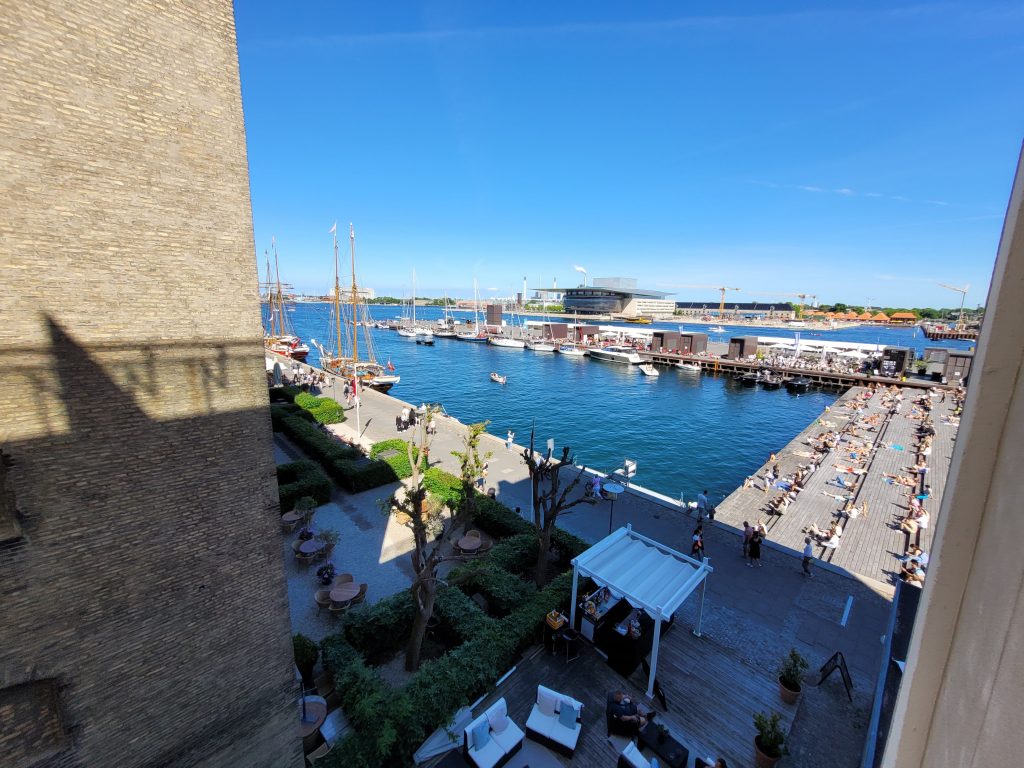
Parking: It is worthwhile to consider visiting Copenhagen during weekends or national holidays, when public outdoor parking is free. Otherwise, parking is pretty expensive in Copenhagen, especially in garages. See more info on parking and fares. We visited Copenhagen during Whit Sunday and Monday, when parking was free, but Copenhagen was a little crowded, especially since it was the “Queen’s Run” organised on Monday.

0 Comments